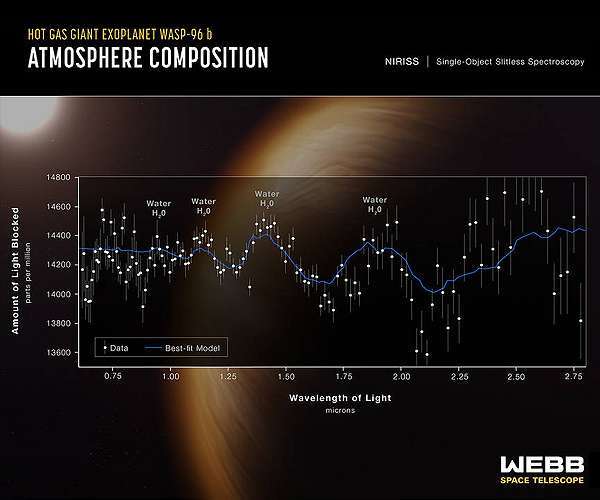6.07.2024

Examining atmospheres around planets beyond our solar system is a crucial step in the search for extraterrestrial life. Astronomist Sebastian Zieba, using data from the James Webb Space Telescope, has been studying small rocky exoplanets. Although no signs of life have been detected yet, his research remains significant for future studies. Zieba graduated cum laude on 25 June.
"The holy grail is always to find traces of life," said Sebastian Zieba, affiliated with Max Planck Institute for Astronomy (MPIA) in Heidelberg and Leiden Observatory. "But we're not yet able to detect some form of life directly." The focus of Zieba's research is to determine which planets, other than Earth, could host atmospheres, and potentially life. His work involves searching for atmospheres around rocky exoplanets, which are planets outside our solar system smaller than twice the radius of Earth and dominated by rock.
To identify a possible atmosphere around an exoplanet, measuring the planet's temperature can provide insights into its climate and heat distribution. Zieba applied this method while observing K2-141 b, a lava planet very close to its host star. Due to gravitational forces, this planet always shows the same side to its star, resulting in one side being molten and the other extremely cold. The extreme temperatures cause rock to evaporate, possibly creating a rock vapor atmosphere. This phenomenon was the basis of Zieba's study.
An atmosphere could transfer heat from the hot side to the cold side, moderating the temperature extremes. Zieba explained, "What we tried to answer was: is the planet really hot or somewhat colder than really hot?" He found potential signs of a rock vapor atmosphere. Future data from the James Webb Space Telescope(JWST) should provide further insights into such exoplanets.
Another approach to detecting atmospheres is studying the emission spectra for specific molecules. Zieba examined the spectra of TRAPPIST-1 c, a rocky exoplanet similar to Venus. "That motivated us to think the atmosphere would be similar as well." He searched for carbon dioxide (CO2) traces, explaining, "CO2 is everywhere. Any activity on a planet, such as volcanism, would cause an amount of CO2. So if there is an atmosphere, you would expect to find a certain amount of CO2. But we did not find any CO2 on this planet." TRAPPIST-1 c is likely a bare rock planet, unlike Venus with its dense CO2-rich atmosphere.
Zieba began his work using the Spitzer infrared telescope and later transitioned to using JWST data during his PhD. "I feel honoured to belong to the first generation of PhD students who get to work with the JWST data."
Enhanced telescopes could enable more in-depth research into exoplanet atmospheres. "It would be awesome to launch ten JWSTs and then glue them together," Zieba joked. He anticipates continuing his work with JWST and looks forward to projects like the Extremely Large Telescope in Chile, the Habitable Worlds Observatory, and the LIFE space mission.
Despite not finding atmospheres around the observed exoplanets, Zieba's research remains valuable. "If you don't detect some feature in an object, such as an atmosphere, it is possible that it doesn't exist, but it can also be due to additional noise, from either the star or your instrument. You will always learn more for future observations, even if we don't find an atmosphere or another hint towards life."
Quelle: SD
